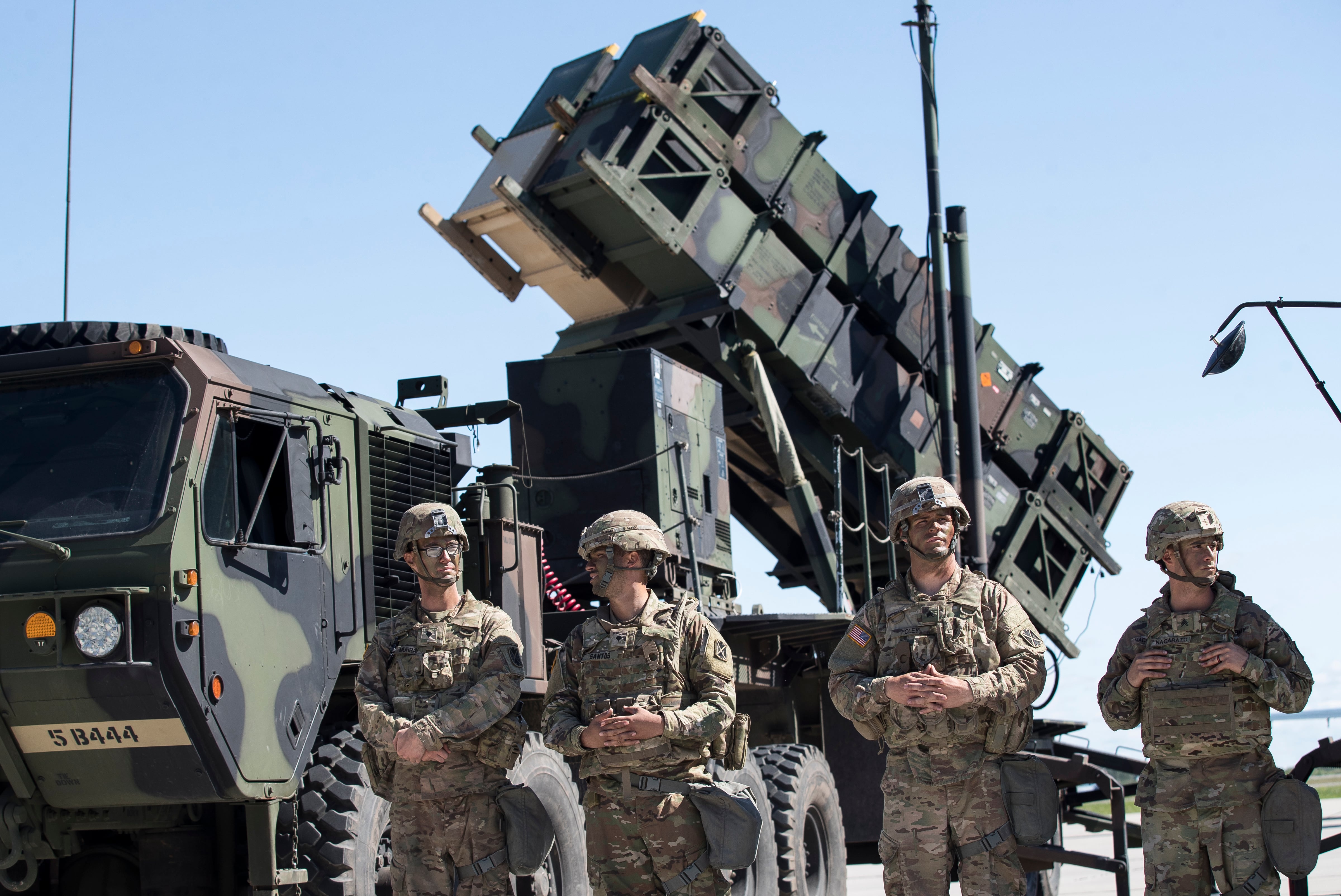WIESBADEN, Germany − NATO’s top commander said he is under guidance to move as quickly as possible in transferring more Patriot air and missile defense systems to Ukraine.
“I won’t go into a ton of details on any of that, I’m not going to tell the Russians or anyone else the exact numbers of weapons that we’re transferring or when those will happen,” U.S. Air Force Gen. Alexus Grynkewich, Supreme Allied Commander Europe, said at the Association of the U.S. Army’s inaugural LandEuro conference in Wiesbaden, Germany, July 17.
“We’re also looking at other capabilities and what those needs are and working on proposals for our political leadership,” Grynkewich said.
President Trump said publicly earlier this week that he intends to ship more Patriot systems to Ukraine.
The commander will soon bring European nations together to work on delivering Patriot and other capabilities, he said, to “look at what’s the art of the possible. This will be tied to being able to sequence what flows into Ukraine now … capabilities that are in Europe can be moved more quickly than something off the production line. The production line can then be used to back-fill the capabilities.”
The United States, which has been using Patriot since the Cold War era, sent systems to Ukraine for the first time in April 2023. Its interceptors went to work immediately, batting off even complex threats like hypersonic weapons.
A total of 19 countries have purchased the Raytheon-made weapon, and there are more than 250 Patriot fire units around the world.
Tom Laliberty, Raytheon’s president of land and air defense systems, told Defense News in an interview in 2024 that the U.S. owns 85-90 of those, with the rest distributed among the other 18 customer countries.
The U.S. Army is slated to build a new Patriot battery to replace the one sent to Ukraine and to secure one more battalion’s worth of systems.
International customers are on the rise, and countries like Germany that also have sent Patriot to Ukraine have ordered new ones to replenish those sent and to bolster their own defenses.
Raytheon’s production lines have the capacity to make 12 fire units a year, which the company views as sufficient capacity to support current and future contracts as they materialize.
At the same time Lockheed Martin is racing to increase its production of the Patriot Advanced Capability-3 Missile Segment Enhancement, or PAC-3 MSE, interceptor.
The company is contractually working toward delivering 650 PAC-3 MSE missiles per year by 2027. It is currently producing roughly 550 a year.
Lockheed is looking at how it might possibly ramp up to 650 missiles a year earlier, Jason Reynolds, company vice president of integrated air and missile defense within its missiles and fire control business, told Defense News at LandEuro here.
“What we’re endeavoring to do in partnership with the U.S. government, is to pull that left as much as we can,” he said.
The company is also looking at “the efficiencies and streamlining and doing everything we can to stretch those dollars actually to take that to a higher capacity, upwards of around 750 per year by 2027,” Reynolds said.
The government has not yet officially released the number for a top production level, “if you take that trajectory and you project it forward into the future years, you will see as well north of 1,000 and then even much higher after that,” he said.
While he doesn’t have a good sense of what the numbers will be, Grynkewich said, “I know that my guidance is to get the Ukrainians what they need to defend themselves. So there’ll be more to follow. We’re going to move as quickly as we can on this. A ton of coordination in making it work, but, as I mentioned, we’re already doing the preparation phase for the first tranche of capability to start moving with respect to Patriots.”
Jen Judson is an award-winning journalist covering land warfare for Defense News. She has also worked for Politico and Inside Defense. She holds a Master of Science degree in journalism from Boston University and a Bachelor of Arts degree from Kenyon College.





